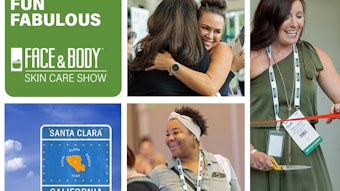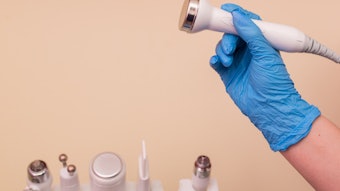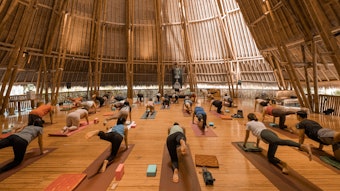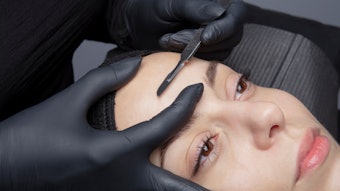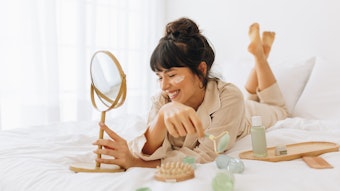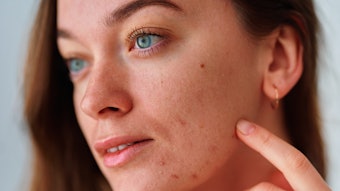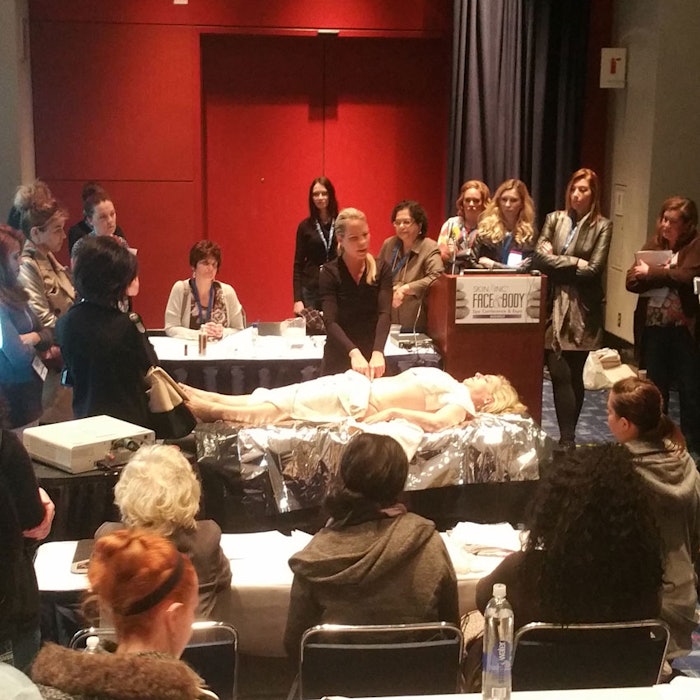
"I advise you not to take advice from Dr. Google," Erin Madigan-Fleck, N.M.D., cautioned attendees during Face & Body Midwest. This was in relation to seeking answers for individual nutritional needs. “Your composition is very different from the person sitting next to you.”
The conference and tradeshow, held by Skin Inc. on March 12-14, 2016, at McCormick place in Chicago, brought estheticians and esthetician educators face to face with a multitude of device, equipment, product, special service and other providers—and one another. The education sessions ranged from an opening panel discussion by product formulators on “potions and lotions,“ to business, science, treatments and wellness tracks.
Protein and Health
Madigan-Fleck, of the Association of Holistic Skin Care Practitioners and Naturophoria, led the Wellness track with a presentation on protein and its role in skin health. “I guarantee you that half of you in this room are protein deficient. While protein is a critical and key nutrient in health, it often is under-consumed in the typical American diet, which can lead to larger health issues.”
She described the various protein types, including amino acids and peptides and their structures, along with how the body processes them. “Protein should be 10-20% of your food intake. If we don’t get enough protein, we disrupt processes in the body including building skin and bone.”
Her talk continued into peptides in cosmetics such as carrier and signal peptides; the role of proteins in keeping the circadian clock “on time”; and a warning about too much refined sugar, which she called “the number one enemy in poor health.”
Madigan-Fleck’s closed with the message to remember the importance of food in skin health. While she reminded the audience that estheticians cannot prescribe nutrition, they can consider it in the symptoms clients present. She quoted Hippocrates’ belief to “treat food as medicine.”
Himalayan Salt Detox
Ann Brown, of Spa Shiki, Spa Insight Solutions and Saltability, gave a live demonstration of a Himalayan salt detox body wrap using an infrared warming blanket. She referred to the book Water & Salt: The Essence of Life, which claims the effects of this salt and technique are similar to a three-day juice fast.
Brown used a layer of aloe vera on a model’s skin followed by application of the salt. She proceeded to methodically exfoliate the model’s body, from feet and legs, up to the behind. She emphasized the importance of also focusing on the buttocks by holding the coccygeal plexus in place with one hand, and rubbing with the other. “Don’t you hate it when people lightly treat this area? You need to really get in there, like all the other areas.”
She worked her way up the back, turned the model, then down her front. She emphasized the adrenals and abdominal area. “Helping to relax the adrenals is huge right now.” She added that stimulating downward along the inner hip bone and belly area aids in digestion. She worked her way down, then wrapped the model in a mylar layer followed by the warming blanket. The infrared blanket could be omitted, according to Brown, depending on the client’s needs.
“The heat makes your client sweat, which dissolves the salt and it absorbs into her body, replenishing electrolytes, which are minerals,” Brown explained. She added, “The salt is also very grounding.” Following the treatment, Brown recommended a quick, cool shower for the client if possible.
She advised estheticians to look at their client’s body before doing any treatment. “It’s your job to look at their body and get a sense of their health.” The model was very relaxed and enjoyed her Himalayan salt treatment—which, Brown noted, you can add to water and drink, replenishing electrolytes.
“There’s more [to the face] than just facial muscles—it goes beyond.”
Essential Oil Therapy
After a networking luncheon, sponsored by PCA Skin, attendees returned to a soft, lavender-scented presentation room. Kim Manley, of KM Herbals, set the mood to discuss therapeutic essential oils for the treatment room. “Essential oils are an essence. They are sacred—they touch our mind, body and soul,” she said.
Manley described a wide range of oils, such as rose geranium, neroli oil and lavender, among many others. She detailed their applications for various symptoms and explained to attendees how to dilute them for a given application. “Essential oils are volatiles from plants,” she said. “It’s really important to use pure oils and to dilute them in some sort of carrier oil. While they cost a bit up front, just a few drops in a dilution can go a long way in your practice.”
Making Clients Feel Whole
Becky Kuehn of Evergreen SkinCare Solutions and Oncology Spa Solutions shared her story as a cancer survivor, explaining to attendees the role of estheticians in treating clients who do not feel “whole.” But first she asked, “What is ‘whole’?” and explored the empty feeling that can come from a cancer diagnosis, divorce, loss of a loved one and more.
Kuehn shared a heartwarming story of a young woman and her grandmother who had come to see her. She explained how making the grandmother feel beautiful, in part by adorning her with a wig, lit her up from the inside—and that’s what it’s all about. “I never tell my clients about my experience with cancer because it is different for everyone. So I don’t know what they are going through. You need to connect with clients and listen to them,” she explained.
Meridian Facial Contouring
The last presentation of the day, by Janel Luu of Mieux Cosmetics, left standing room only. Her topic on merging Easter-inspired Meridian theory with Western esthetic techniques captured everyone’s “qi”—i.e., life energy.
“This application has been around for many, many years,” said Luu. She explained there are some 670 points in the face that connect with the body’s systems, and that following these paths during facial massage can help to improve the client’s health and well-being. She gave a lively, humorous demonstration with her team and a model to illustrate the techniques. They started with the scalp and worked along the meridians—similar to acupuncture.
“I believe in the power of what acupuncture can do with meridians,” said Luu, “so why not do the same with massage and without needles?” Her team used a jade, curved tool to stroke these lines, which Luu noted apparently has a certain charge in its structure. Luu referenced her Korean heritage and Asian connection with not only the meridian system, but also the use of jade. “We used to think we were just following tradition, but apparently there’s more reason behind it,” she joked.
She added that this technique not only improves circulation, but it can aid other conditions. Acne, for example, can be treated using detoxifying movements. It can also be used to treat inflammation, as it is called in Western thought, which in Eastern thought is qi blockage. However, you have to be careful with sensitive skin to not be too aggressive.
“You have to be open-minded,” she said, of this approach and theory. “There’s more [to the face] than just facial muscles—it goes beyond.”
Follow our Face & Body coverage on Skininc.com and in our e-newsletter.
